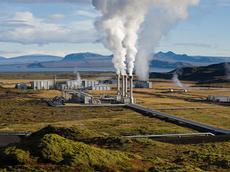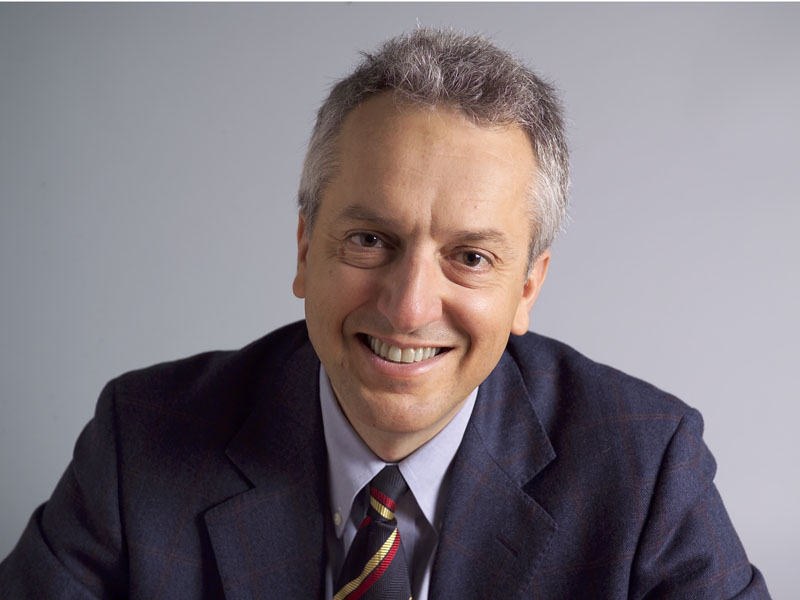Using geothermal heat wisely
If you want to generate power from geothermic heat, you have to drill deeper than for conventional heat pumps. The recently cancelled “Deep Heating Mining” project in Basel reveals that there is still a considerable need for research in this field. Writing in “Nature”, Domenico Giardini highlights the risks and problems that need to be considered and discussed extensively.

The negative press surrounding the unsuccessful deep geothermics project “Deep Heat Mining” in Basel catapulted geothermics into the spotlight. After several earthquakes measuring up to 3.4 on the Richter scale in December 2006, the project was suspended; last week, it was finally abandoned once and for all. Meanwhile, a geothermic deep drilling project 100 kilometers north of San Francisco in one of the most seismically active zones on Earth was abandoned during the preliminary stages due to technical difficulties. The Basel project had also been discussed extensively in the Californian press.
Promising energy source
No-one can deny that energy production from deep geothermics constitutes a promising alternative energy source and in the years to come hundreds of deep geothermic power plants will spring up. Domenico Giardini, ETH-Zurich professor and head of the Swiss Earthquake Commission, is convinced of this. What’s more, an American team of experts predicts that by 2050 ten percent of America’s current energy consumption, i.e. 100,000 megawatts of electrical output, could be generated by deep geothermic power stations.
In order to use the heat from deep inside the Earth, you have to drill to depths of at least 3000 meters, and usually even 5000 meters. In a so-called “Engineered Geothermal System” (EGS), water is forced into the impermeable rock under high pressure. Cracks subsequently form gradually, creating a hot water reservoir. The hot water returns to the surface through additional boreholes under high pressure, which prevents the water from boiling, where it escapes as steam due to the decompression. The vapor drives steam turbines, which ultimately generate power. However, using water pressure to blast rock also triggers microearthquakes, which can even cause minor damage. In Basel, for instance, numerous cracks appeared in the plaster in houses. The cost of the damages for insurance companies amounted to about nine million francs.
What went wrong in Basel? For Giardini, the problem was clear: the risk analysis carried out beforehand was inadequate. The industry painted too rosy a picture and did not sufficiently take into account the local conditions and a public that has been sensitized to earthquakes in a seismic region like Basel. The seismologist suggests that seismically active zones would be better off concentrating on generating warm water to maintain classic heat pumps close to the surface than generating heat and power with EGS. Either way, he believes a comprehensive risk analysis to be necessary beforehand to identify suitable locations.
Physical processes insufficiently understood
Together with his research team, in August Giardini published a paper1 on the lessons learned from the Basel project and where there is still a need for clarification: the physical processes and parameters that cause and control the active stimulation of earthquakes through water injection have been poorly understood thus far. For example, it is not really known how frequent and how big the earthquakes can be.
The European project “Geiser” (Geothermal Engineering Integrating Mitigation of Induced Seismicity in Reservoirs), which is due to be launched in January 2010, aims to shed more light on the matter. According to Giardini, for the time being deep geothermic projects should only be used to generate power at a safe distance from urban centers– just to be on the safe side. “Only once we know how deep geothermic systems – the EGS – behave physically can we also afford to bring them to seismic regions”, says Giardini. As far as the current drilling project in Triemli is concerned, however, he does not anticipate any major problems as the region is considerably less seismically active than Basel. Moreover, it does not involve an EGS, the plan being to use naturally circulating water. Before long-term operations are approved, two exploratory bores are to be carried out followed by a comprehensive risk analysis.
For Giardini, the top priority is to consider and openly identify the earthquake risks caused by geothermic drilling. “All technology carries risks; dams can burst and nuclear power stations can break down”, he says. These hazards need to be discussed extensively with scientists, politicians and the general public. The open question is whether society can find a way to face them sensibly and accept a certain element of risk.
Swiss Earthquake Commission as “honest broker”
Following his publication in August, the scientific journal “Nature” asked
Giardini for his thoughts on the matter2, deeming them to be of
public interest. With the article, he assumes the role of an “honest broker” in
geothermic matters by presenting the opportunities and risks of deep
geothermics and discussing its current potential. He therefore not only calls
for the delicate subject to be discussed openly, but has also paved the way for
this to happen and highlighted where there is a need for action and which
issues have to be clarified.
References:
1Kraft T et al.: Enhanced
Geothermal Systems: Mitigation Risk in Urban Areas: EOS (2009), 90, 237-280.
2Giardini D: Geothermal quake risks must be faced: Nature (2009),
462, 848-849.








READER COMMENTS